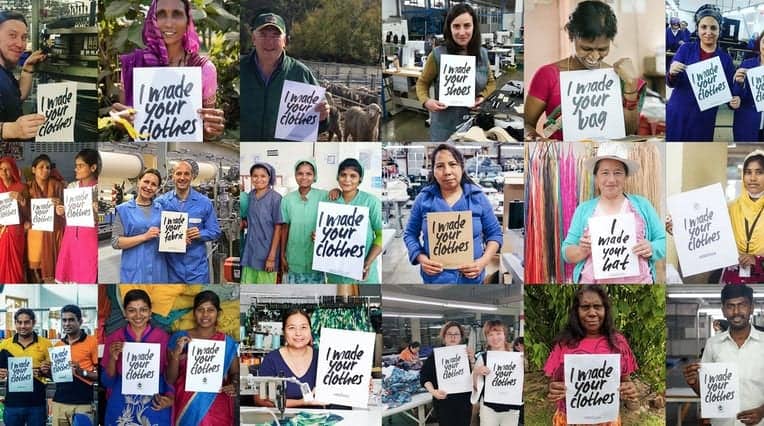Thrifting and buying used is a great option for many people to sustainably buy clothes, but is it the most ethical option, as it is often presented? In a thread on ethical clothing habits, Eco-Stylist presented another angle; supporting brands that create sustainable clothing and pay their workers fairly is another good choice.
Much like the decisions in many areas of life, the question of “what is the most ethical” puts a very nuanced topic into a black and white box, where it simply doesn’t fit. There is no best option, rather there are a variety of good options.
From an environmental lens, thrifting and using clothes you already own is a good choice, but it doesn’t take human factors into consideration. Sustainability is also about people, something referred to as social sustainability.
Social Sustainability

What is social sustainability? People need jobs within a social environment, and the production of clothing, if made ethically, positively contributes to good jobs for people earning a living wage.
Clothing production employs more than 40 million workers, and of those only about 2% earn a living wage today. When brands commit to paying livable wages, through Fair Trade certification or other means, it does a really good thing for clothing makers.
If we are going to have a practical plan to change things for the better, we want to look into all types of sustainability, including social and environmental. Buying secondhand is a good option addressing the clothing waste problem, and supporting ethical brands is a good option that contributes to fair wages and more sustainable manufacturing techniques.
These concepts are detailed by the Ethical Fashion Podcast in Episode 7: Made in Kabul, and Episode 10: Purpose and Social Sustainability with Jeanne de Kroon of Zazi Vintage.
*Listen @ 33:30 for a very interesting conversation on social sustainability.
Episode 10 details how Zazi Vintage creates their fashion from recycled fibers from the Silk Road. Their business model is one of the great examples of how new garments can be made sustainably, and create good jobs.
Jeanne’s vision of a sustainable future doesn’t just lie in what is used to make clothes, but in the connections we have with what we consume, considering all the people involved in making what we have. She engages with every level of the supply chain and lists all prices transparently for public record. This is a unique approach within the fashion industry, but it is a legal standard in the nonprofit sector.
Bringing in this standard of transparency to fashion brands will help make ethical consumption an easier process for the consumer.
Ethics of the Resale Economy

The increasing interest in thrifted clothes has given rise to a problematic turn worth considering; the rise of reselling clothes from thrift stores at a higher markup. In Remake’s article on the ethics of resale, they address the questionable intentions of some shoppers or “entrepreneurs” who use thrift stores to upcycle and then sell cheap clothes for a larger profit.
Nonprofits like Goodwill and Salvation Army sell donated clothes for affordable prices, often to those in need. The reselling gig puts that into jeopardy when those in need are left with only the pieces that aren’t “vintage” enough to mark up. This causes an increase in prices for desirable items. Consignment shops, while they are more expensive, serve the needs of curating used clothes without necessarily stepping on the toes of nonprofits that provide community services.
However, thrifting and buying from resellers is still a sustainable way for anyone to get new-to-them clothes and support small businesses or Etsy freelancers without feeding into the large fast fashion machine.
What Can We Take Away From This?
The social aspects of sustainability need to be addressed just as urgently as the environmental aspects; when both are acted upon, it becomes a much more complex situation than just “use what you have.” It takes into consideration the people that are employed in the global fashion industry, who deserve to earn a living wage, as well as the reduction of waste when producing new goods.
The choice between thrifting and buying from a sustainable brand has no black and white answer. Instead, it’s a decision taking into account what is right for you financially, what matches your values at the time, and what you can do in that moment.
The good news is: if you’re making more conscious decisions about your purchasing decisions, none of those answers are wrong.
For more resources check out:

Kit George is a writer at Eco-Stylist. They study English and Creative Writing, Theatre Arts, and Nonprofit Leadership and Philanthropy at the University of Iowa. Kit enjoys fantasy novels, writing short stories and poetry, and Dungeons and Dragons.









